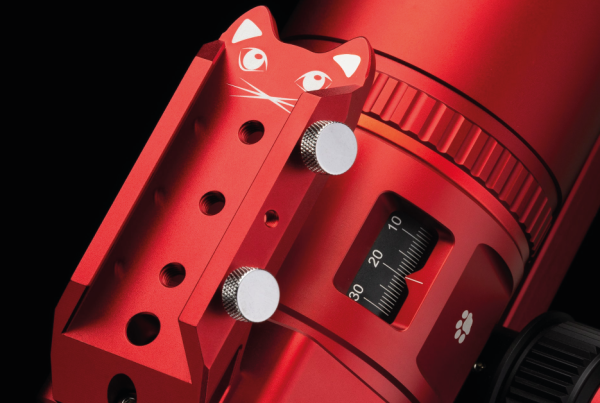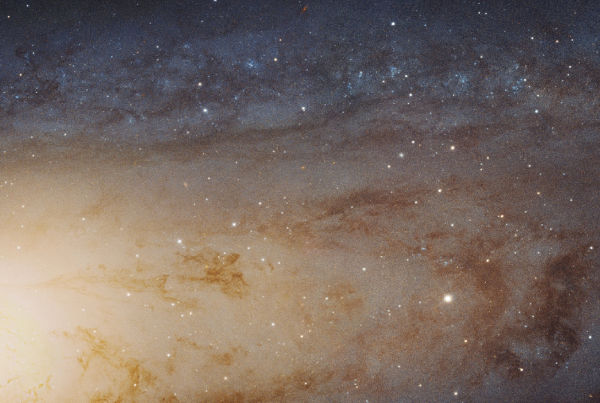Your first few deep sky images are a milestone. They might be noisy. They might be off‑centre or oddly coloured. But they’re yours – and they mark the moment you stopped just looking up and started recording the sky.
What you do next matters more than how perfect those first shots are. Each image holds a lesson. Each one shows you what worked and what didn’t. And each one is a step toward sharper, cleaner, more confident results.
This guide is about learning from your own early work – without judgement or overwhelm. It’s not about chasing perfection. It’s about recognising progress, asking questions, and enjoying the process of discovery.
1. Look At What You Captured – Not Just What You Missed
It’s easy to focus on the flaws. But your first image that shows the Orion Nebula, or resolves the Milky Way, or reveals colour in the stars – that’s an achievement worth acknowledging.
Start by asking:
- What’s visible that I couldn’t see with my eyes?
- What part of the image surprised or pleased me?
- Did I catch detail, structure, or colour in the object?
Learning to see the good helps you stay motivated – and makes it easier to build on your success.
2. Observe The Stars
Stars tell you a lot. They show if your focus was sharp, your tracking was accurate, and your mount was stable.
Ask yourself:
- Are stars round or stretched?
- Are they sharper in the centre than at the edges?
- Is there a pattern to the blur (which could point to polar alignment or guiding issues)?
These clues are quiet but helpful. They can point you toward better focus techniques, improved balance, or longer exposures with tighter stars.
3. Review Your Framing And Composition
Even in deep sky photography, framing makes a difference. Was the object centred, or cut off? Was there space around it? Did the field include other interesting features?
Try loading your images into a planning tool like Telescopius or Stellarium to see how you might frame the same target differently next time.
Some early mistakes are just learning the sky – others are chances to try a different crop or orientation. Don’t be afraid to revisit a target with new framing in mind.
4. Think About Exposure Time And Image Depth
How long did you shoot? How many frames did you stack? Were the faint parts of the object visible, or did they disappear into the background?
Compare your exposure details to what others recommend for that target. Did you capture:
- Enough total integration time (light frames)?
- Clean calibration frames (darks, flats, bias)?
- Consistent exposures with minimal glow or banding?
If your image feels flat or noisy, the solution is usually simple: shoot more. Time is your most powerful tool in astrophotography.
5. Evaluate Your Post‑Processing – Gently
Processing is often the steepest part of the learning curve. Don’t expect to master it right away. Instead, look at:
- Did I stack the data properly?
- Did I over-stretch the image or crush the blacks?
- Are colours natural, or too intense?
Try reprocessing an old image with what you’ve learned since. You’ll likely see immediate improvement – without touching the camera. That’s a clear sign of growth.
There are excellent guides and video tutorials for every major processing tool, from DeepSkyStacker to Affinity Photo and PixInsight. You don’t have to learn it all at once.
Keep A Simple Log (You’ll Thank Yourself Later)
Make short notes after each session. Include things like:
- Date, location, and target.
- Equipment and settings.
- What went well, what could be better.
- Any surprises – good or bad.
Over time, you’ll start to see patterns. You’ll remember what exposure time worked for Andromeda. You’ll notice which targets were too close to the horizon. This kind of quiet documentation helps you improve faster – without needing to guess what you did last time.
Final Thoughts: It’s Not Just The Stars That Evolve
Your first five images won’t win awards – and they shouldn’t have to. Their value lies in what they teach you, not what they prove.
You’ll look back on them in a few months or years and smile. Not because they were flawless, but because they were brave. You showed up, set up, pointed your camera at infinity – and captured something from the edge of space.
That’s not small. That’s the beginning.




